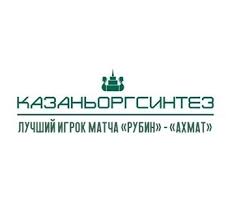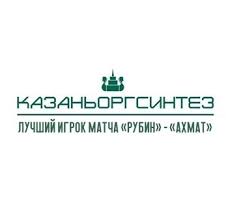Day 2 :
Keynote Forum
Marta Irene Litter
National Atomic Energy Commission, Argentina
Keynote: Emerging options for solving the arsenic problems of rural and periurban areas in Latin America
Time : 09:00-09:45
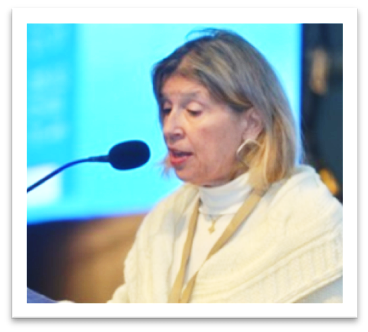
Biography:
Marta Irene Litter has a PhD in Chemistry (Buenos Aires University, Argentina), with Post-doctoral studies at the University of Arizona, USA. She is Superior Researcher of the National Research Council and Full Professor at the National University of General San Martín. She has been Head of the Division of Environmental Chemistry Remediation (National Atomic Commission) all in Argentina. She has more than 200 scientific publications in international journals, books and book chapters. She has received the Mercosur Prize in Science and Technology (2006 and 2011) and was President of the International Congress on Arsenic in the Environment (2014). She was designated Pioneer on photocatalysis in Argentina (2016) and accepted as Member of TWAS (2018).
Abstract:
Contamination of water by arsenic (As) is a worldwide problem with high impact in the poorest regions, with more than 226 million people exposed. The most affected populations are those in low income countries. The higher concentrations and, consequently, the most important health problems are localized in Argentina, Bangladesh, Nepal, Chile, China, Hungary, India, Mexico, Romania, Taiwan, Vietnam and the USA. In Latin America (LA), the problem affects at least 14 countries (Argentina, Bolivia, Brazil, Chile, Colombia, Cuba, Ecuador, El Salvador, Guatemala, Honduras, Mexico, Nicaragua, Peru and Uruguay), and the number of exposed people could be estimated in around 14 million. The most critical areas are located in Argentina, Chile and México. Emerging, low-cost technologies to mitigate the problem of arsenic in drinking water resources of Latin America, suitable for rural and periurban areas lacking centralized water supplies have been evaluated. The technologies use generally simple and low-cost equipment that can easily be handled and maintained by the local population. Experiences comprise of coagulation/filtration with iron and aluminum salts, scaled-down for small community- and household-scale-applications, adsorption techniques using low-cost arsenic sorbents, such as geological materials (clays, laterites, soils, limestones), natural organic-based sorbents (natural biomass), and synthetic materials, use of constructed wetlands with native perennial plants for arsenic rhizofiltration, capacitive deionization, zerovalent iron especially using nanoscale particles and solar technologies including TiO2-heterogeneous photocatalysis.
Keynote Forum
Nikki Baccile
Sorbonne University, France
Keynote: Molecular hydrogels from microbial biosurfactants

Biography:
Niki Baccile has graduated from the University of Padova (Italy) and has completed his PhD in Materials Science from University Pierre and Marie Curie, Paris 6 (now Sorbonne University) and Post-doctoral studies from University of Montpellier (France) and Max-Planck-Institut für Kolloid- und Grenzflächenforschung Stute (Germany). He is a CNRS Researcher at the Laboratoire de Chimie de la Matière Condensée de Paris at Sorbonne University. He has published more than 70 papers in internationally renowned peer-reviewed journals on topics going from Green Chemistry, Materials’ Chemistry, Physical Chemistry and Soft Matter. He has contributed to the developments in the field of biosurfactants in the past 10 years, collaborating with the worldwide experts in the field of Industrial Biotechnology.
Abstract:
Microbial biosurfactants are one of the most fascinating success stories in the field of green chemistry since at least four decades. Specific microorganisms are able to produce large quantities of biodegradable molecules with surface active properties. If phospholipids, lipopeptides, glycolipids and polymers are the major classes, glycolipids certainly constitute the most interesting one for the large produced amounts. Compounds like sophorolipids and rhamnolipids are now well-known and routinely employed in detergent and cosmetic formulations, for their low toxicity and high biodegradability. Despite these important achievements, many questions still lie unanswered and the potential of these molecules is in fact largely underexploited, especially in other domains like colloid chemistry and materials science. This paper will discuss the hydrogel-forming properties of this class of molecules. Hydrogels are an important class of soft materials and they are generally composed of polymers. However, low-molecular weight gelators are becoming more and more important for their stimuli-responsiveness and improved toughness. The hydrogel-forming potential of biosurfactants was only discovered very recently and we aim at showing the latest advances in this field.
- Green Chemistry and Technology | Environmental Chemistry and Pollution Control | Green Polymers | Green Materials
Location: Andromede
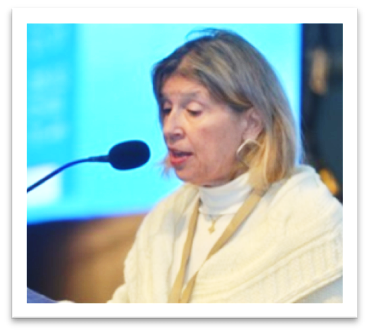
Chair
Marta I. Litter
National Atomic Energy Commission, Argentina
Session Introduction
Boopathy Gnanaprakasam
Indian Institute of Science Education and Research, India
Title: Sustainable synthesis of reactive intermediates under continuous fl ow
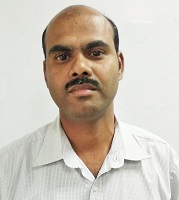
Biography:
Boopathy Gnanaprakasam has obtained his BS (1999) and MS (2001) degree’s in Chemistry from the University of Madras, India. Lately, he obtained his PhD (2008) on the topic of “Synthetic methods towards terpenoids, steroids and macrocycles” from Bhavnagar University. Subsequently, he has completed a couple of Post-doctoral Program from Weizmann Institute of Science, Israel (September 2008-August 2011) under Professor David Milstein and AVH Fellow from Gottingen University, Germany (September 2012-February 2014) under Professor Lutz F Tietze. Prior to AVH Post-doctoral Fellowship, he joined as a Scientist at ICES-A*STAR, Singapore (December 2012-July 2013). After Post-doctoral program, he began his independent career as an Associate Professor at SRM Research Institute (March 2014-June 2014). In late 2014, he moved to IISER-Pune in the Department of Chemistry where he currently holds the rank of an Assistant Professor. His research interests include development of metal catalyzed sustainable/green synthetic methods for the natural products, continuous flow synthetic methodology for bioactive molecules and fluorinated organic scaffold. His recent research developed sustainable synthesis of peroxides, aldehydes and vinylogous esters.
Abstract:
In view of global concern, pharmaceuticals and fine chemical industries are increasingly seeking to replace stoichiometric reagents used in synthetic transformations by catalytic routes, in order to develop greener, safer, and more economical processes. Therefore, there is an immense interest for the discovery of new chemical process with sustainability. Integration of catalysis for the sustainable synthesis of small molecules, specialty chemicals and natural products are still more demanding research areas. Presently, continuous flow chemistry has become a new chemical processing technology for the chemical synthesis in a sustainable approach by which many disadvantages of traditional batch-process can be eradicated. Continuous flow methods are generally more efficient than conventional batch conditions and advantages associated with the flow relative to the batch, are the high surface-to-volume ratio, increased mass transfer, improved safety, more reproducibility, space and power savings, the ability to conduct multistep sequences, improved product quality with better yields, and easy scale-up. To this direction, we have developed a continuous flow process for the various chemical transformations utilizing environmentally benign catalyst. Thus, we have developed new catalytic reactions for the C-H peroxidation and Nef reaction under continuous flow using Fe-heterogeneous catalyst having several advantages over the batch/classical reactions. Furthermore, we have also developed continuous flow process for the synthesis of the versatile vinylogous ester intermediate and explored their application in the transetherification under continuous flow process using Fe-catalyst/Amberlyst-15. In addition we have also developed hydrolysis of vinylogous ester under continuous flow which can avoid the use of hazardous acidic environment. All the above research investigations will be presented.
Andrey Norov
JSC “The Research Institute for Fertilizers and Insecto-Fungicides, Russia
Title: Development and implementation of fl exible technology of granular NPKS / PKS-fertilizers of slow release with a controlled dissolution rate

Biography:
Andrey Norov has graduated from D. Mendeleev’s University of Chemical Technology in Russia, for over 25 years, he had been working at Mineral Fertilizers Plants. Since April 2007, he has been working for JSC “NIUIF”, at the present moment his job title is an Industrial Technology Director. He has obtained his PhD in Engineering Science. He is an Honorable Chemist of the Russian Federation, and also he got governmental and industry-related awards. He is an author of 73 research articles and publications, and 27 patents in the field of phosphorus-containing fertilizers technology. He took part as a Speaker in 21 international conferences and symposiums.
Abstract:
JSC “NIUIF”, the oldest (founded in 1919) and the only one in Russia scientific-research institute for phosphorus-containing fertilizers, developed a novel flexible technology of production of NPKS/PKS-fertilizers of slow release with a controlled dissolution rate and nutrient assimilability into the soil solution. These fertilizers are environmentally safe, non-radioactive; practically do not contain compounds of harmful heavy metals (arsenic, cadmium, lead, mercury, chromium, etc.). Besides the main nutrients (nitrogen, phosphorus and potassium) they also contain sulfur and calcium in a plant assimilable form. The dissolution rate is regulated by changing the ratio between the water-soluble and assimilable forms of phosphorus, as well as by addition of ammonium salts. The technology is waste-free, moreover, it allows to process wastes and by-products of other production units: phosphogypsum, conversion chalk, cake from sodium tripolyphosphate production, sludge sand, etc. These fertilizers were successfully tested by the International Institute of Plant Nutrition and in the Russian Agricultural Academy named after K.A. Timiryazev and everywhere its high agronomic efficiency was proved. The technology is protected by three patents of the Russian Federation. Based on the design documentation developed by JSC “NIUIF”, NPKS/PKS-fertilizer plant was built and successfully set into operation at Metakhim plant (Volkhov city, Leningrad Region).
Maksim Tcikin
JSC “The Research Institute for Fertilizers and Insecto-Fungicides, Russia
Title: Ammonium sulphate production from by-products of wet phosphoric acid process - fl uosilicic acid and phosphogypsum
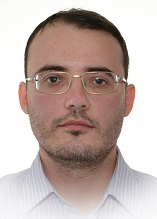
Biography:
Maksim Tcikin is graduated with Honors from the D. Mendeleev University of Chemical Technology of Russia. He is a R&D and Business Development Manager at JSC “The Research Institute for Fertilizers and Insecto-Fungicides” (JSC “NIUIF”), which belongs to PhosAgro Group. He is a Co-author of six patents in the field of phosphate raw materials processing and fertilizer technology.
Abstract:
At present time many producers of phosphate fertilizers faced the challenge of processing and recycling of fluosilicic acid (FSA). It is a pollutant of a primary concern and cannot be landfilled without being treated. Existing best available techniques for processing FSA involves production of fluoride salts which are limitedly applied. As a result, the acid is neutralized with lime. This method of treatment ultimately increases the amount of solid waste sent for storage. Ð better environmental alternative of this method is to use technological solutions which can allow to process FSA to produce substances required for chemical industry. NIUIF has developed a new technique of co-processing of phosphogypsum and FSA by-products to produce ammonium sulphate and fluoride containing precipitate. This process is based on neutralization of FSA by ammonia in presence of phosphogypsum. Gypsum, the main component of phosphogypsum, is used for precipitation of F in form of calcium fluoride. After neutralization and precipitation the slurry is separated into solution of ammonium sulphate and mixture of calcium fluoride, gypsum and silica to be used in the cement industry. Water solution of ammonium sulphate with low content of impurities can be used for production of NS, NPS and NPKS fertilizers.
Wai-Hung Lo
The Hong Kong Polytechnic University, Hong kong
Title: Effective removal of anionic contaminants in aqueous solutions by metalalginate immobilized fungal materials
Biography:
Dr. Wai-Hung Lo is Associate Professor in the Department of Applied Biology and Chemical Technology at the Hong Kong Polytechnic University. He received his B.Sc. and M.Sc. in Chemical Engineering from Massachusetts Institute of Technology, Ph.D. from Purdue University and postdoctoral training at Cornell University, USA. His research interests include pollution control, waste conversion, anti-cancer drug development and adsorption. He was recognized for his research achievements by receiving international Gold Medal Awards for the inventions of potent anti-cancer drugs, and Technology Transfer Awards, President’s Award, and High Impact Achievement Award for Research Achievement from the Hong Kong Polytechnic University.
Abstract:
The contamination of drinking water resources with toxic anions such as fluoride, arsenate and chromate presents severe threats to both human and environment. Conventional water treatment techniques have drawbacks such as inefficiency in anion removal, high capital and operational costs. Biosorption and bioremediation can offer efficient and affordable alternatives for the removal of anions. Mucor rouxii (MR), a filamentous fungus, was examined as a potential biosorbent for the removal of anions in aqueous phase. This fungal biomass was further immobilized in alginate beads and used for the removal of fluoride, arsenate and chromate. We investigated the effects of different cross-linking metal ion centers such as Ca(II), Ce(III), Ce(IV), Sn(IV) and Zr(IV), and doping amino-functionalized silica on the anion removal efficiency of metal-alginate immobilized MR. Among the different metal-alginate immobilized MR, the Zr(IV)-alginate immobilized MR (Zr-AIM) exhibited the most efficient adsorption towards fluoride and arsenate, whereas silica doped Zr-AIM (SZr-AIM) demonstrated the most efficient chromate adsorption. Batch adsorption experiments were conducted to determine the influences of operating conditions including contact time, solution pH, initial anion concentrations and biosorbent dosage on the anion adsorption efficiency of Zr-AIM and SZr-AIM. The integrated results from SEM-EDX, FTIR and XPS analyses and adsorption studies revealed that the Cr(VI) removal mechanisms by SZr-AIM mainly involved: (i) adsorption of Cr(VI) onto the Zr(IV) that crosslinked the alginate polymers through electrostatic interactions, and (ii) partial reduction of the adsorbed Cr(VI) to Cr(III) on the biomass surface. Overall, the Zr-AIM and SZr-AIM are efficient biosorbents for the removal of fluoride, arsenate and chromate from contaminated water and wastewater.
Elena Prokopeva and Kseniya Tsyglyaeva
PJSC "Kazanorgsintez", Russia
Title: Forecast of the biopolymers future in Russia
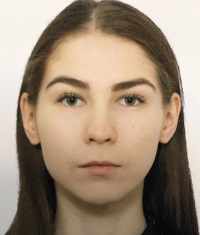
Biography:
Kseniya Tsyglyaeva and Elena Prokopeva graduated from the Kazan National Research Technological University with receiving a bachelor's degree in Innovative Technologies in Chemistry. Also we were trained at the technical University of Ostrava (Czech Republic) in quality management. Currently Kseniya Tsyglyaeva is studying in “Commercialization of R&D Results”. Elena Prokopeva is studying the specialty "Machines and apparatus of industrial ecology". They will receive a master's degree in 2020.
Both of them work in Kazanorgsintez, PJSC on the position of sales economists of Analysis and Planning Department. Kazanorgsintez, PJSC is one of the key chemical players in the Russian economy with a 60-year history. Our company ranks third in the list of the most open and transparent companies according to the data provided by the Russian office of Transparency International e.V. (TI), the international non-government organization. At this moment Kazanorgsintez, PJSC has a project of the Polyhydroxyalkanoates’(PHA) bioplastic production.
Abstract:
Polyhydroxyalkanoates (PHA) are the most commemorated of biodegradable bioplastics due to good physical and mechanical properties, fast and complete biodegradability. PHA is a group of biodegradable and biocompatible polymers, which consists of more than nine groups, including polyhydroxybutyrate (PHB) and polyhydroxyvalerate (PGV). They are synthesized enzymatically by bacteria as a reserve source of energy. The main field of application of PHA-plastics is the manufacture of bulk products, packaging and 3D printing, depends on mixing PHB with various polymers. And also there are some fields of its using which will be available as piece and mass goods only with significant marketing support. Now the biopolymer market in Russia is only being formed, so there are only approximate indicators for several industries, but one of the goals of this study is also to characterize the biopolymer market in Russia. Some aspects of the study also relate the possibility of legislative lobbying for the use of bioplastics in Russia.
Elena Prokopeva and Kseniya Tsyglyaeva
PJSC "Kazanorgsintez", Russia
Title: The properties of Polyhydroxybutyrate and fi elds of its application

Biography:
Kseniya Tsyglyaeva and Elena Prokopeva graduated from the Kazan National Research Technological University with receiving a bachelor's degree in Innovative Technologies in Chemistry. Also we were trained at the technical University of Ostrava (Czech Republic) in quality management. Currently Kseniya Tsyglyaeva is studying in “Commercialization of R&D Results”. Elena Prokopeva is studying the specialty "Machines and apparatus of industrial ecology". They will receive a master's degree in 2020.
Both of them work in Kazanorgsintez, PJSC on the position of sales economists of Analysis and Planning Department. Kazanorgsintez, PJSC is one of the key chemical players in the Russian economy with a 60-year history. Our company ranks third in the list of the most open and transparent companies according to the data provided by the Russian office of Transparency International e.V. (TI), the international non-government organization. At this moment Kazanorgsintez, PJSC has a project of the Polyhydroxyalkanoates’(PHA) bioplastic production.
Abstract:
Polyhydroxyalkanoates (PHA) are the most commemorated of biodegradable bioplastics due to good physical and mechanical properties, fast and complete biodegradability. PHA is a group of biodegradable and biocompatible polymers, which consists of more than 9 groups, including polyhydroxybutyrate (PHB) and polyhydroxyvalerate (PGV). They are synthesized enzymatically by bacteria as a reserve source of energy. PHA are thermoplastic linear polyesters based on aliphatic hydroxyacids and consist of more than 9 groups. Among the most significant representatives include polyhydroxybutyrate (PHB) and polyhydroxyvalerate (PGV). PHB derives from renewable sources and can degrade in different environments to carbon dioxide and water. PHB properties can be varied by mixing it with other polymers. For example, blending PHB with PLA, you get a good blend for 3D printing and package production. And blending PHA with PBAT make the polymer more flexible. The main field of application of PHA-plastics is the manufacture of bulk products, packaging and 3D printing, depends on mixing PHB with various polymers. And also there are some fields of its using which will be available as piece and mass goods only with significant marketing support.



